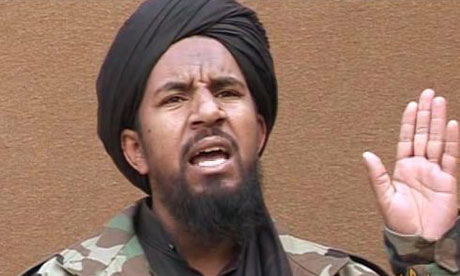
Hot Issue — The Death of Abu Yahya al-Libi and Its Impact on AQ Strategy, Priorities and Goals
By:

Executive Summary
Abu Yahya al-Libi, purported to be killed in a drone strike, proves a heavy loss to al-Qaeda leadership. A charismatic leader and Ayman al-Zawahiri’s number two, al-Libi was seen as the successor to al-Zawahiri. Al-Libi was a part of the core group of battle-hardened intellectuals, who surround al-Zawahiri and lead from hidden enclaves in the post-9/11 al-Qaeda. With the loss of bin Laden and now al-Libi, al-Zawahiri is the most prominent and experienced leader left in the fold. If al-Zawahiri passes without an equally capable successor, the network that al-Qaeda has established over the last decade will falter.
Introduction
On June 5, the White House stated that Abu Yahya al-Libi, the reported number two leader of al-Qaeda, was killed in a drone strike in Pakistan. [1] If confirmed, his death will prove another heavy blow to al-Qaeda. Commentators have expressed the view that while this latest high profile death in America’s drone war will not affect al-Qaeda’s strategy, it will seriously degrade the organization’s effectiveness. The charismatic al-Libi was known for his inspirational videos, his sophisticated writings and most of all for his status as the most credible religious scholar in al-Qaeda’s camp. In many respects, he was like another drone- target, Anwar al-Awlaki in Yemen, except al-Libi’s strength was primarily among Arabic-speaking young men and his formal Islamic credentials were arguably far superior. Although it was almost impossible to envision American-born al-Awlaki as al-Qaeda’s eventual leader, seeing al-Libi in that role was reasonable, if not certain.
In addition to his more obvious role as a recruiter and propagandist, al-Libi had a powerful, if subtle, role as a close supporter of Ayman al-Zawahiri. A physician by training, Jihadist through long experience and the inspiration behind al-Qaeda’s political-military strategy, al-Zawahiri needs someone to advise him on technical religious matters. Al-Zawahiri occasionally acknowledged al-Libi’s help in commenting on drafts of his books. [2] It is also likely that, like Bin Laden, al-Zawahiri would have occasionally asked al-Libi to write on topics of religious significance to al-Qaeda’s members. [3] While there are other advisors who can offer al-Zawahiri credible advice on religious topics, the leader has lost his strongest lieutenant, who also represented his best hope of the continuity of al-Qaeda’s global project.
The Development of the Current al-Qaeda System
After the rapid American onslaught in the wake of 9/11 that toppled the Taliban and destroyed al-Qaeda’s safe haven in Afghanistan, Ayman al-Zawahiri and Bin Laden were forced to reconsider their strategy of trapping the United States in a quagmire in Afghanistan. They had thought that their success with the Soviet Union could be replicated if American forces could be lured into direct confrontation with Muslim forces inside Afghanistan. They had not expected that the United States military technology of 2001 when coupled with Afghan tribal enemies of the Taliban could prove so much more powerful than anything the Soviet Union could deploy in 1979. The war in Afghanistan continued but mostly without al-Qaeda.
By the end of 2001, therefore, al-Qaeda began to replace this failed concept with a more sophisticated strategy, which al-Zawahiri first signaled in his Knights Under the Prophet’s Banner. This book originally conceived as a Jihadist critique of Egypt and its relationship with the United States and Israel, contained a section on the future of Jihadists in which al-Zawahiri justified the withdrawal of al-Qaeda’s leadership into secure hiding places and leaving the rest of the membership to fight the war Bin Laden had declared. This compressed section of strategic advice at the end of his book also argued for rallying the Muslim community against the United States, using suicide attacks for maximum impact, fighting "in enemy countries" carried out by individuals and small clandestine groups, and turning every regional jihad into a global struggle against the United States.
The battle-hardened intellectuals and guerrilla trainers of the al-Qaeda movement were the first to heed al-Zawahiri’s advice. Starting in 2002, the new genre of Jihadist strategic literature in Arabic burst onto Jihadist websites. [4] Authors like Abu Ubayd al-Qurashi, Abd al-Aziz al-Muqrin, Yusuf al-Uyayri, Abu Bakr Naji, and Abu Mus‘ab al-Suri wrote articles, technical manuals and books. Few read these documents but many used recorded lectures drawn from them to train new Jihadist terrorists in the strategy and tactics of what has become known as global jihad. By 2005, all of the above-mentioned men were either killed or captured. Like al-Libi’s corpus, their works are available on the Internet and are quoted in al-Qaeda publications for both Arabic and English speaking audiences.
The al-Qaeda system that evolved after 2001 included the three parts that are regularly cited in Western commentary, a central guidance group, regional affiliates (sometimes referred to as "open fronts"), and clandestine small cell and individual (lone-wolf) terrorists. These three parts were designed to work independently according to a common strategy. Commentators sometimes observe that AQAP in Yemen has become more powerful than al-Qaeda Central. Such comments are correct but they fail to mention that this was a design feature of al-Qaeda’s strategy. The central group was isolated for security reasons and intended to offer guidance and priorities, but no operational control. The regional affiliates were to do the fighting, raise the money, and provide training for the individuals and small clandestine cells who would carry out terrorist attacks in target countries.
The Primacy of Yemen
Since 2001, the United States has killed or captured several generations of al-Qaeda leaders. Al-Qaeda launched and lost a "jihad" in Saudi Arabia (2003-6) and saw its organization in Yemen virtually destroyed by 2004. The United States invaded Iraq with the result that a majority Shi’ah government came to power. Al-Qaeda then used Iraq as a recruitment vehicle and training ground for Jihadist guerrillas from around the region. The United States pulled out of Iraq on an agreed schedule and ramped up the counter-insurgency war in Afghanistan at the same time that it dramatically increased the scope and effectiveness of a counterterrorism offensive focused mainly on Pakistan and Yemen.
In 2012, al-Qaeda has independent affiliated organizations in Yemen, North Africa, the Sahel, and the Horn of Africa. It still has a presence in Iraq and has apparently opened a small front within Syria while the Boko Haram in Nigeria is reported to have ties with al-Qaeda’s Maghreb affiliate. While, the central organization is much diminished in Pakistan, al-Qaeda’s local allies there are among the most dangerous groups. At the present time AQAP in Yemen has emerged as the most dangerous of all al-Qaeda’s assets.
The Arabian Peninsula has always been the al-Qaeda leadership’s main regional priority because its energy resources are crucial to the American economy and it contains two of the holiest sites for Muslims. AQAP is pursuing al-Qaeda regional goals. Acting independently, the organization is carrying out al-Zawahiri’s strategy as articulated by Abu Bakr Naji (see Terrorism Monitor, May 20, 2011). It operates an "open front" involved in an opportunistic guerrilla insurgency against the failing Yemeni state; it plans and executes terrorist attacks against the United States and Saudi Arabia; and it has a strong propaganda machine to promote al-Qaeda’s brand, ideology, and strategy, and to recruit new members.
How The War Ends
If the United States continues its current counterterrorism strategy, we should expect to see al-Qaeda weakened to the point where it presents a regional but not global threat. Sooner or later, al-Zawahiri will pass from the scene. Without a strong, experienced leader in al-Qaeda Central, the system established over the last decade will not support the current strategy against the United States. But there is more to be done. The Jihadist ideology that al-Qaeda developed does not recognize defeat, so we are likely to be left with individuals and small groups that disappear but do not surrender. The ideology cannot be defeated with military or police operations. Unless other tools are developed, we could encounter a future al-Qaeda Central, perhaps under a new name, pursuing an improved strategy with the same Jihadist goals that have become familiar.
To defeat al-Qaeda, the West needs to engage in an effective war of ideas backed by concrete actions. The modern Jihadist movement is a new version of guerrilla warfare, which needs popular support to succeed. The Jihadist movement uses the perceived economic and political humiliation of traditional Muslim communities by Western powers and authoritarian regimes to achieve whatever popular support it has occasionally enjoyed. To see a successful end to the war against al-Qaeda, the United States needs to appeal to the majority of Muslims, who are calling for justice, dignity, and jobs. American use of targeted counterterrorism to defend its territory and citizens must continue, but using conventional forces against an unconventional enemy has been costly and politically counterproductive. In the end, modest programs aimed at economic development, private sector investment, and good governance will provide a better alternative to conventional war.
Notes:
1. Arabic news sources, twitters, blogs, forums and videos reported al-Libi’s death using the White House as a source; for example see Magharebia, June 7, 2012: https://www.magharebia.com/cocoon/awi/xhtml1/ar/news/awi/newsbriefs/general/2012/06/07/newsbrief-01?utm_source=twitterfeed&utm_medium=twitter. Al-Arabia also issued a video account of his life and status, see: https://www.youtube.com/watch?v=A-uNWrwekg0.
2. For example, al-Zawahiri acknowledged al-Libi’s help in his monograph on the Pakistani Constitution, al-Subh wa al-Qindil (The Morning and the Lamp), 6. https://www.tawhed.ws/a?a=3i806qpo.
3. For an example of this type of use of al-Libi, see reference to Abu Yahya in Socom-2012-0000019 Orig.pdf, 48 or Socom-2012-0000019 Trans.pdf, 48. https://www.ctc.usma.edu/posts/letters-from-abbottabad-bin-ladin-sidelined. The English translation is misleading. The issue that needs to be avoided is not "religious stereo-typing"; the issue is "takfir" calling other Muslims unbelievers when they disagree on matters of doctrine, a practice that has hurt al-Qaeda with the larger Muslim community.
4. The term "Jihadist" is not borrowed from Western usage in English; it is derived from harakah jihadiyyah (Jihadist movement), a term used by all of al-Qaeda’s major strategists.




